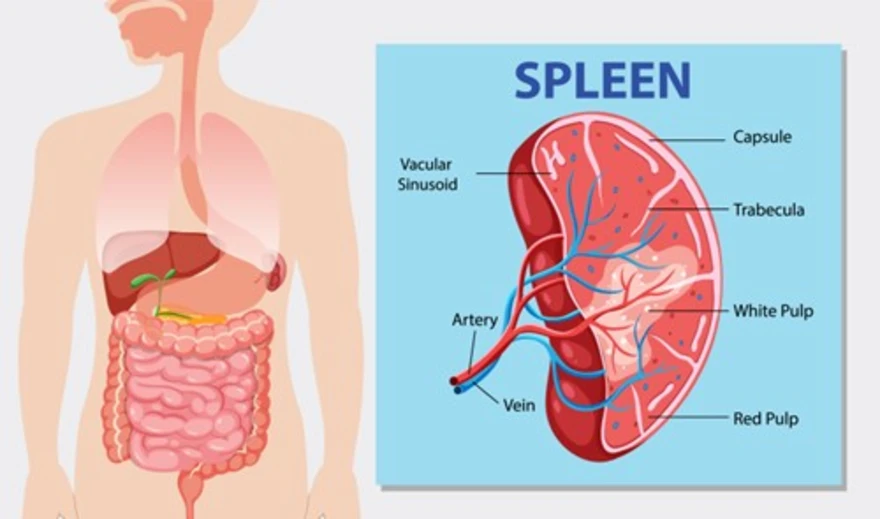Preventive Healthcare
Sacroiliitis ICD 10: Symptoms, Causes, Diagnosis, and Treatment

Table of Contents
Sacroiliitis is a condition that affects the joints in your lower back, specifically the ones where your pelvis and spine connect. This condition can cause severe pain and discomfort, making it difficult to go about your everyday activities.
If you think you might have sacroiliitis, it is important to see a doctor so they can properly diagnose and treat the condition. Keep reading to learn more about sacroiliitis, its symptoms, causes, and diagnosis, as well as treatment for sacroiliitis.
What is Sacroiliitis ICD 10?
Sacroiliitis is a condition that refers to the inflammation of one or both sacroiliac joints, also known as bilateral sacroiliitis in the case of the inflammation of both joints. These joints are located where the base of the spine meets the pelvis, and they stabilise the spine. ICD 10 is the classification code used for sacroiliitis disease as listed by the World Health Organisation under the range of dorsopathies (diseases related to the spine and paravertebral tissues). Sacroiliitis can cause pain in the lower back and buttocks. Furthermore, it may cause stiffness and a reduced range of motion in the affected area. Treatment for sacroiliitis typically involves a combination of pain relief, anti-inflammatory medication, and physical therapy. It is often seen in people with arthritis, especially ankylosing spondylitis.
A few different things that can cause sacroiliitis or bilateral sacroiliitis include infection, injury, and arthritis. It can also be caused by certain medical conditions, such as ankylosing spondylitis. Let's first learn about sacroiliitis symptoms.
Sacroiliitis Symptoms
Different sacroiliitis symptoms vary depending on the severity of the condition. Some common symptoms include pain in the lower back or buttocks; pain in the groin; hip or thigh; and stiffness in the lower back.
Other symptoms may include
- Difficulty walking or standing
- Pain when moving the hip or knee
- Swelling in the joints
- Immense pain in the lower body after prolonged standing or sitting
- Dull and achy feeling in the lower body
If you are experiencing any of these symptoms, it is important to see a doctor so that they can properly diagnose. Also, to keep a note, doing the following activities may increase pain in the lower back due to sacroiliitis:
- Standing or sitting for a long period
- Bear more weight on either one of the two legs
- Running
- Walking by taking large steps
If you are experiencing any of the above symptoms get a joints tests.
Causes of Sacroiliitis
"Know the causes, and you will easily find how to diagnose it!"
It’s quite important to find the causes if you want to diagnose sacroiliitis completely. Some major causes of sacroiliitis are as follows:
Osteoarthritis
It is a type of arthritis that generally affects the lower back joints (sacroiliac joints). It leads to the breakdown of ligaments, causing immeasurable pain in the lower back section.
Ankylosing spondylitis
Ankylosing spondylitis causes inflammation in the joints. It is most common in people between 40 and 60, but it can strike at any age.
The condition affects the spine and sacroiliac joint, which connects the pelvis with the lower back. The joints can become inflamed and stiff, causing pain and stiffness in the back and hips.
Psoriatic arthritis
Another type of arthritis you should be aware of is psoriatic arthritis. This type of arthritis causes not only joint swelling but also scaly skin patches.
Trauma and Pregnancy
Trauma and pregnancy can cause the inflammatory disease that is sacroiliitis. Sacroiliitis appears to be more common in women than in men. The reason for this is unknown, but it may be related to hormonal changes during pregnancy or the result of heavier periods in women as a result of pregnancy.
Pyogenic Sacroiliitis
Pyogenic sacroiliitis is an inflammatory disorder caused by an infection in the sacroiliac joint. This joint is located between the spine and pelvis and supports the spine and prevents movement between the bones of the hip (thigh bone) and the spine (vertebra). The term also refers to inflammation in this area and inflammation of other joints such as the knee and ankle.
How is Sacroiliitis Diagnosed?
Your doctor may perform a physical examination, movement tests, and blood work to diagnose sacroiliitis. Imaging tests may be needed to rule out other conditions that can cause sacroiliac joint pain.
Physical Examination
Your doctor will perform a complete physical examination. This will include looking at your spine and sacrum, the part of the pelvis. They will also check for tenderness or swelling in the muscles around the joint, as well as any abnormalities.
Movement Tests
A clinician may ask you to do movements that are similar to your symptoms. These may include:
- Sitting and standing with your feet flat on the floor (checking for balance)
- Lifting your leg up and down (does it hurt?)
- Bending over (does your hip ache?)
- Turning around in bed (does your lower back hurt?)
- Vomiting or coughing (does it hurt?)
Imaging Tests
Imaging tests such as X-rays or CT scans can show abnormalities in soft tissue near your spine that could indicate sacroiliitis.
Treatment for Sacroiliitis
There are multiple treatment options for sacroiliitis, depending on the severity of your condition. Here are some of the main treatments you can perform to tackle sacroiliitis.
Physical Therapy
Physical therapy is one of the most common ways to treat early-stage sacroiliitis. Physical therapy will include specific sacroiliitis exercises, including movements and stretching that will help you to increase your range of motion. Sacroiliitis exercise also benefits muscle strengthening.
Medication
Some medicines will help you deal with sacroiliitis.
These include pain relievers and muscle relaxants like cyclobenzaprine that will help decrease the pain in the muscles.
Your doctor may also recommend tumour necrosis factor inhibitors, such as etanercept, infliximab, and adalimumab.
Steroids
Corticosteroids are used to decrease inflammation in the joints. However, you should avoid taking steroids as much as possible because their excessive use may cause weakness in joint bones.
Other treatments are as follows:
- Radiofrequency denervation
- Electrical stimulation
If the above treatments do not prove helpful to you, your doctor may also recommend surgery. The surgery is performed to fuse the two joint bones with metal hardware.
Parting Words
Sacroiliitis is a chronic disease that you cannot take lightly. The human spine is a complicated body part, and it must be treated right!
Take care of your back and do not be afraid to ask for help if you are experiencing symptoms that are not going away on their own.
We certainly hope that you found this article informative and helpful to clear up all your doubts regarding sacroiliitis.


























